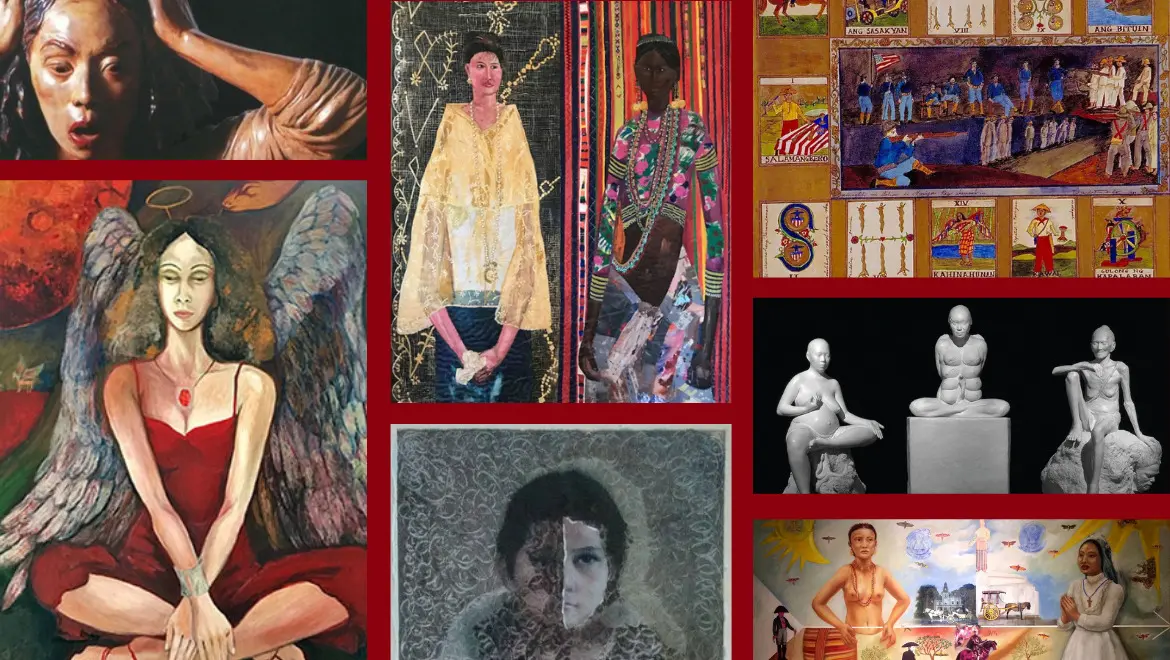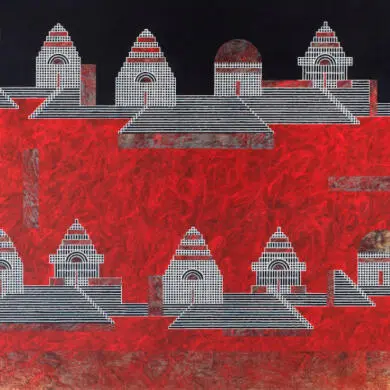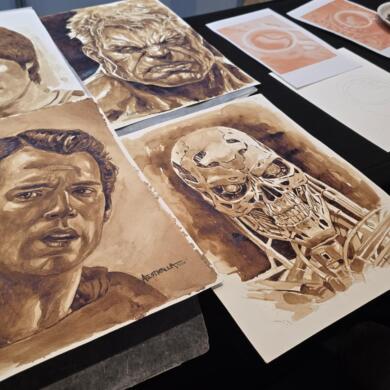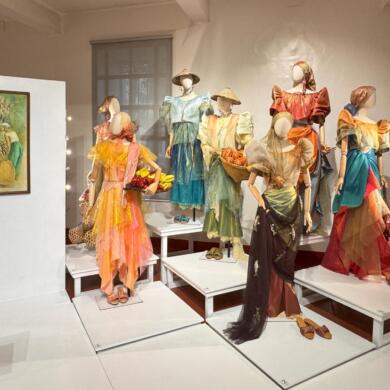By Jessa Mae Abug
As we commemorate women’s month this March, we also appreciate the significant Filipino feminism ideals that championed the Philippine artistic landscape. Take a look at these feminist-inspired artworks from the well-renowned Filipina artists who played a huge role in our history and identity.
1. “American Occupation” (Philip sold Maria to Sam) by Brenda Fajardo, 1989
“American Occupation” (Philip sold Maria to Sam) is a mixed media piece by Brenda Fajardo. It comprises colored inks and tempera on handmade cogon grass paper. The tarot-liked series foretell a visual narrative of the long history of subjugation of the Philippines from different colonial powers, especially the American Occupation. It highlights dilemmas rooted in human rights, migration, political corruption, women’s rights, and historical recuperation.Fajardo’s significant contributions touch more on historical and nationalist themes in folk and mythological tales.
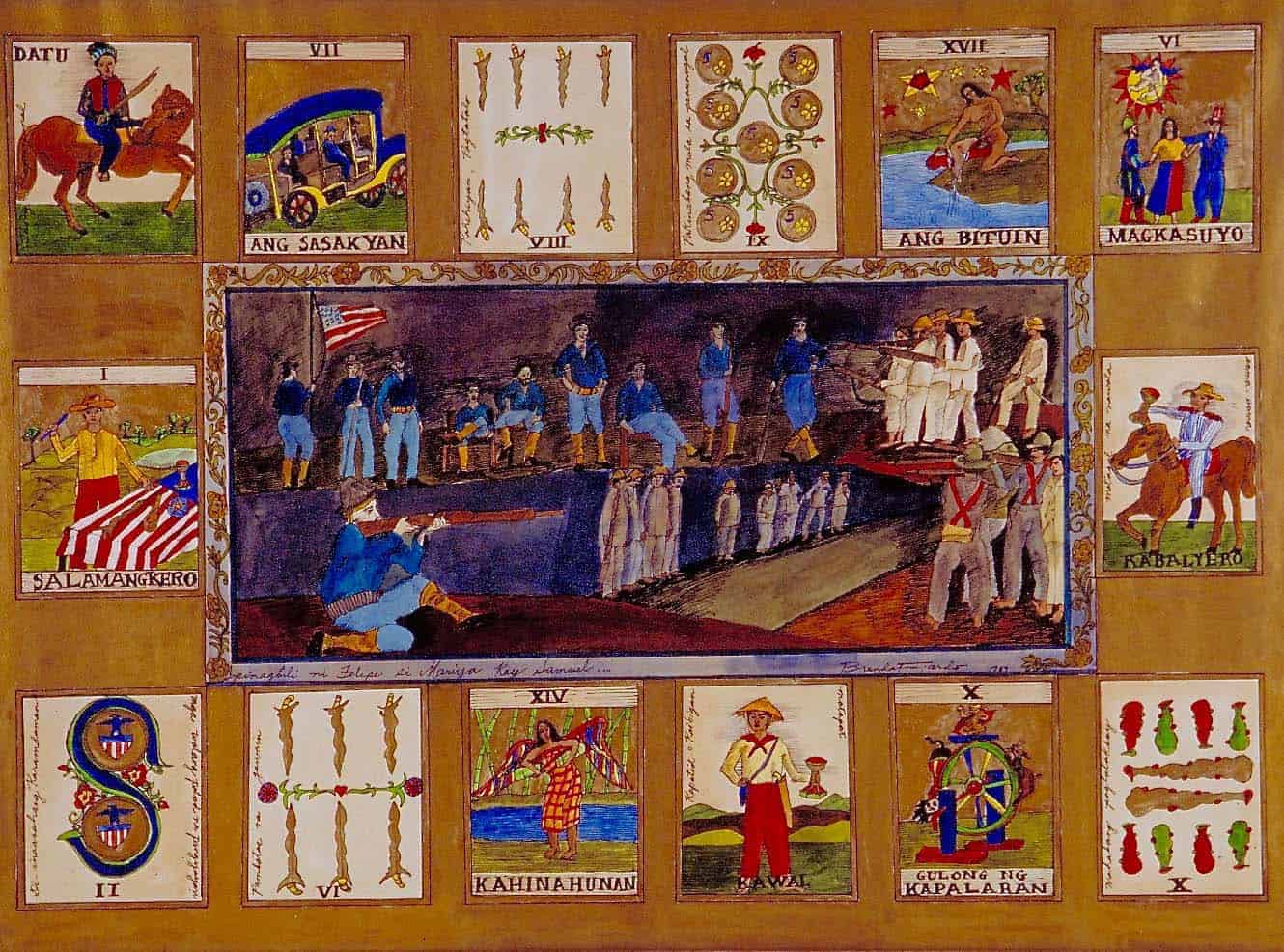
Brenda Fajardo, History Series: American Occupation, 1989 | (c) Photo: PluralArtMag.com
2. “The Filipina: A Racial Identity Crisis” by Pacita Abad, 1990
“The Filipina: a Racial Identity Crisis” is an art piece made by Pacita Abad. This large-scale trapunto recognizes women’s socio-political standings. The two painted women were described as Maria Isabel Lopez, a mestiza influenced by the Spaniard’s race, and Liwayway Etnika, a tribal Filipina with brown-complexed skin. Done in acrylic, handwoven cloth, dyed yarn, beads, gold thread on stitched and padded canvas, Abad’s painting mainly mirrors the opposing racial strains behind the unique color of modern Filipina skin.Abad is well-known for her paintings that criticize women’s stories in a male-dominated culture.
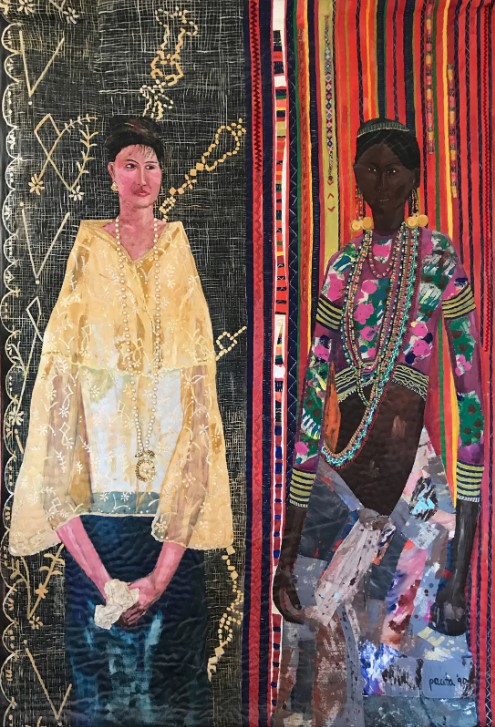
Pacita Abad, Filipina: A Racial Indentity Crisis, 1990 | Photo: PacitaAbad.com
3. “Three Buddha Mothers: Vesta, Dea, Lola” by Agnes Arellano, 1996
“Three Buddha Mothers” (Tatlong Buddhang Ina) is a cold-cast marble sculpture by Agnes Arellano representing the traditional life cycle of women: maiden, wife, and crone (cycles of birth, life, and death). This trinity reinterprets many mother myths in seeking sanctity for the three phases. The prominent female figures are described respectively as “Vesta,” “Dea,” and “Lola.” Faceless Vesta (on the left) postures a young and pregnant mother portraying the goddess of fertility. Dea’s figure poses as the meditating buddha signifying one’s motherhood. Lastly, Lola’s aged crone figure appeals to divination.Arellano, a Filipina sculptor, known for her thought-provoking surrealistic sculptural groupings for 38 years, works on themes mainly about motherhood, men and women, paradoxes of life and death, sexuality, and yin yang.
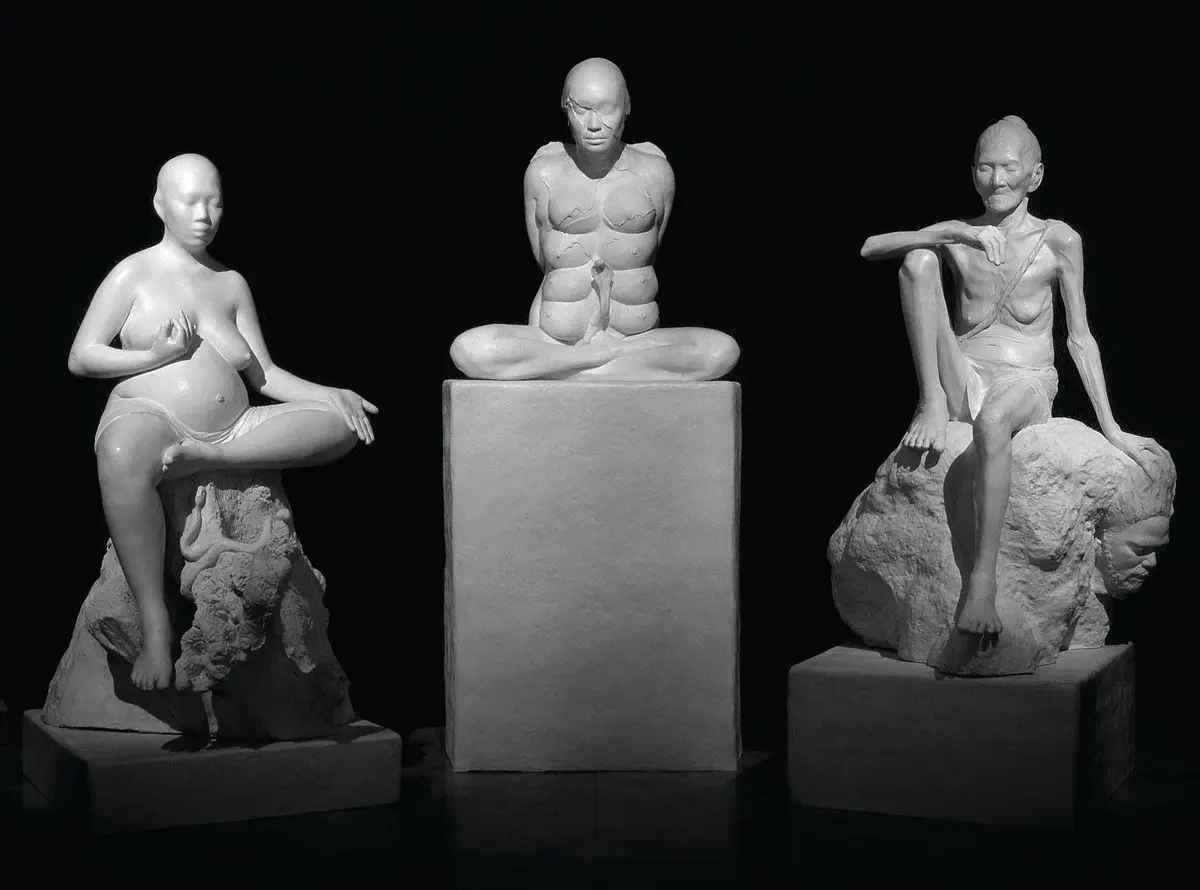
Agnes Arellano, Three Buddha Mothers: Vesta, Dea, Lola, 1996 | (c) Photo: AgnesArellano.com
4. “A Line of History” by Karen Ocampo Flores, 2006
“A Line of History” is a painting that portrays the two different states of women after the Spanish colonization of the Philippines, mirroring the country’s flag. The woman on the left represents the Filipina of indigenous culture, while the woman on the right represents the complexity of Filipino culture influenced by the events of colonization.Ocampo’s excellent works are known for her feminist-themed paintings.
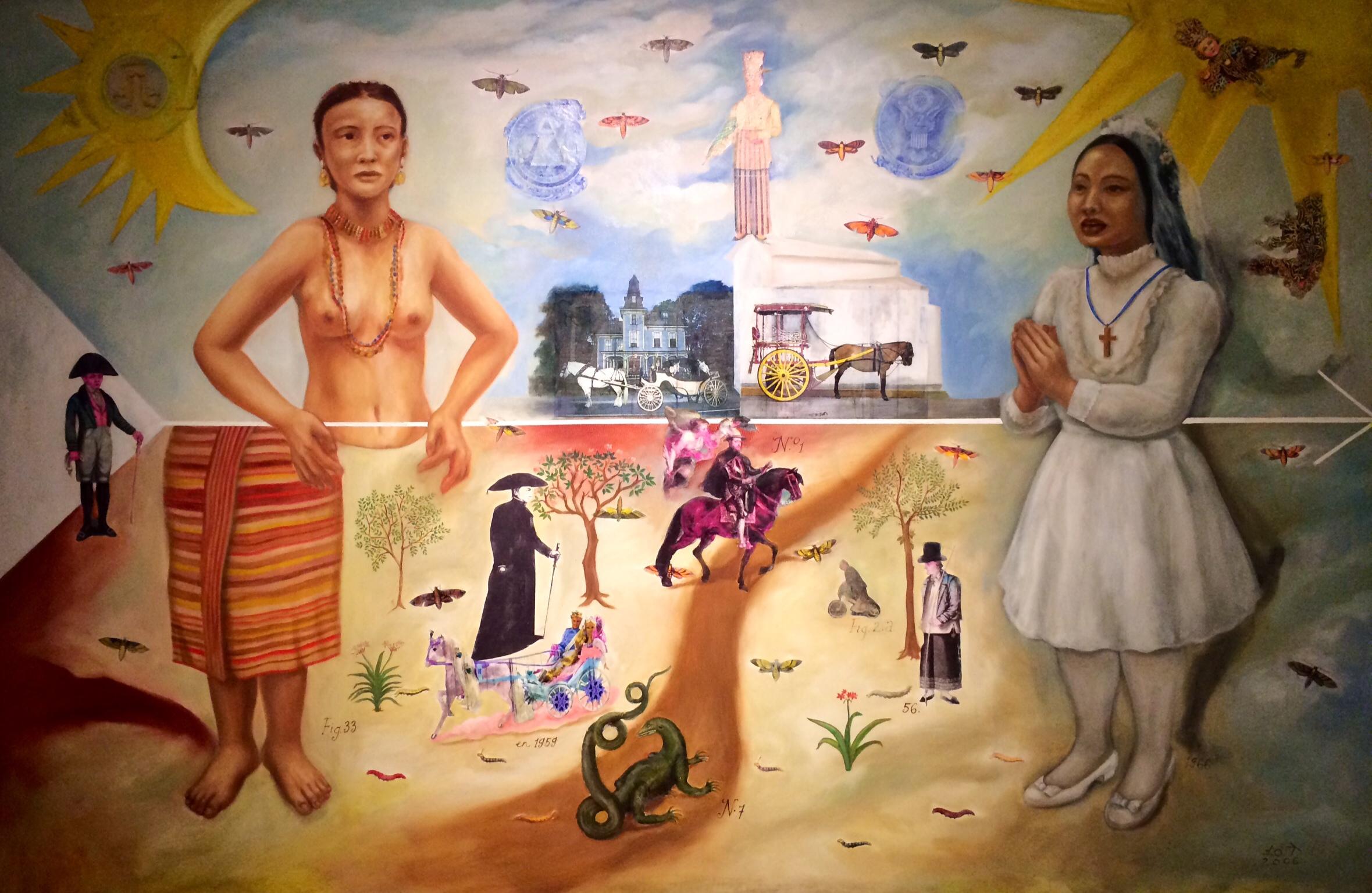
Karen Ocampo, A Line of History, 2006 | (c) Photo: R.A. Villanueva via Twitter)
5. “Yuta: Earthworks” by Julie Lluch, 2008
“Yuta: Earthworks” includes the concept of feminist ideals as an integral part of the art. Aside from conveying environmental awareness, being created through indigenous clay, the piece features the roots of how women shaped the country’s future for women. The collection distinctively embodies the significant contributions of many Filipinas who fought during the revolutions.Lluch’s body of work, primarily sculptures distinguishing exponents of clay and terracotta, invokes concerns about feminist-related themes, such as women’s role in society, femininity issues, religious convictions, personal relationships, and social mores.
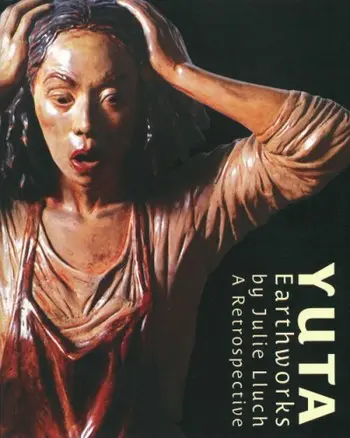
Julie Lluch, Yuta: Earthworks, 2008 | (c) Photo: Asia Art Archive
6. “Winged Lover” by Kitty Taniguchi, 2009
Cristina “Kitty” Taniguchi, a self-taught artist, is often linked to feminism. Through her art, she displays symbolism to create representations of a woman’s different experiences. She conveys commonly held beliefs toward modern women and demonstrates their challenges. In her work, recurring characters have been noticeably seen by many. The figures of the unicorn and lion are seen as symbols of the two sides of a woman: the stereotypical subtlety in contrast to fierceness.Taniguchi’s works have been influenced by Medieval, Renaissance, and Postmodernist art styles using dreamlike icons and imagery. Much of her work explores representations of women’s challenges impacted by socio-cultural conventions.
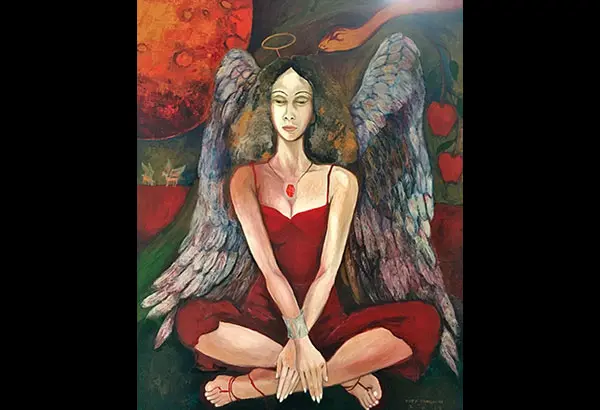
Kitty Taniguchi, Winged Lover, 2009 | (c) Photo: PhilStar.com
7. “Traces 15: Brave Girl” by Imelda Cajipe-Endaya, 2010
Cajipe-Endya’s “Traces 15: Brave Girl” is a monoprint and Chine colle artwork. It features the cruel experiences of a girl in a war. It also captures the aspirations for peace rejected by war, weaponry, and militarization in the social conditions of Philippine colonization. Her significant works mainly attempt to tackle Filipino identity issues, displacement, gender, globalization, migration, and race, either through historical narratives or in printing, drawings, and photographs.
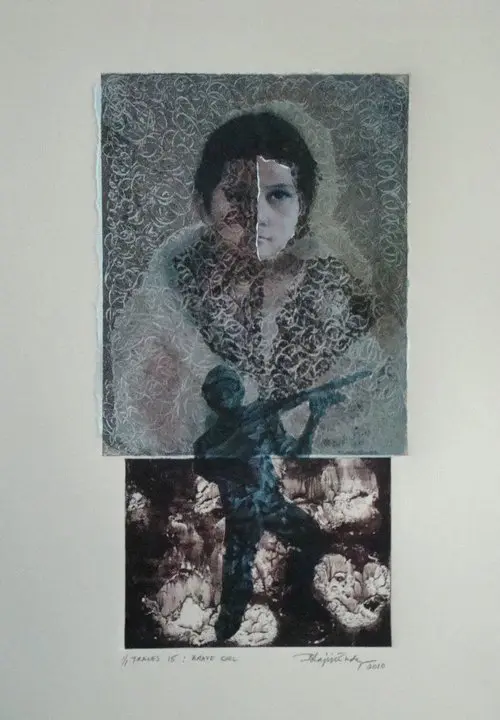
Imelda Cajipe-Endaya, Traces 15: Brave Girl, 2010 | (c) Photo: Imelda Cajipe Endaya via Facebook

